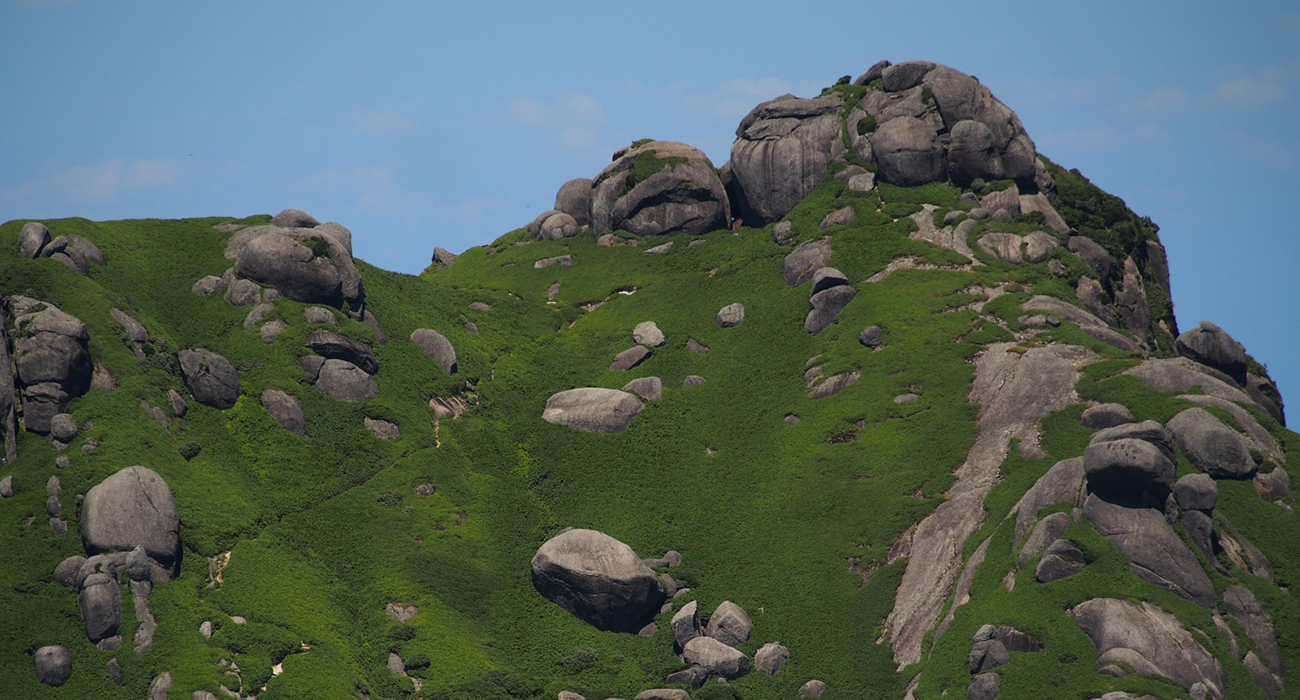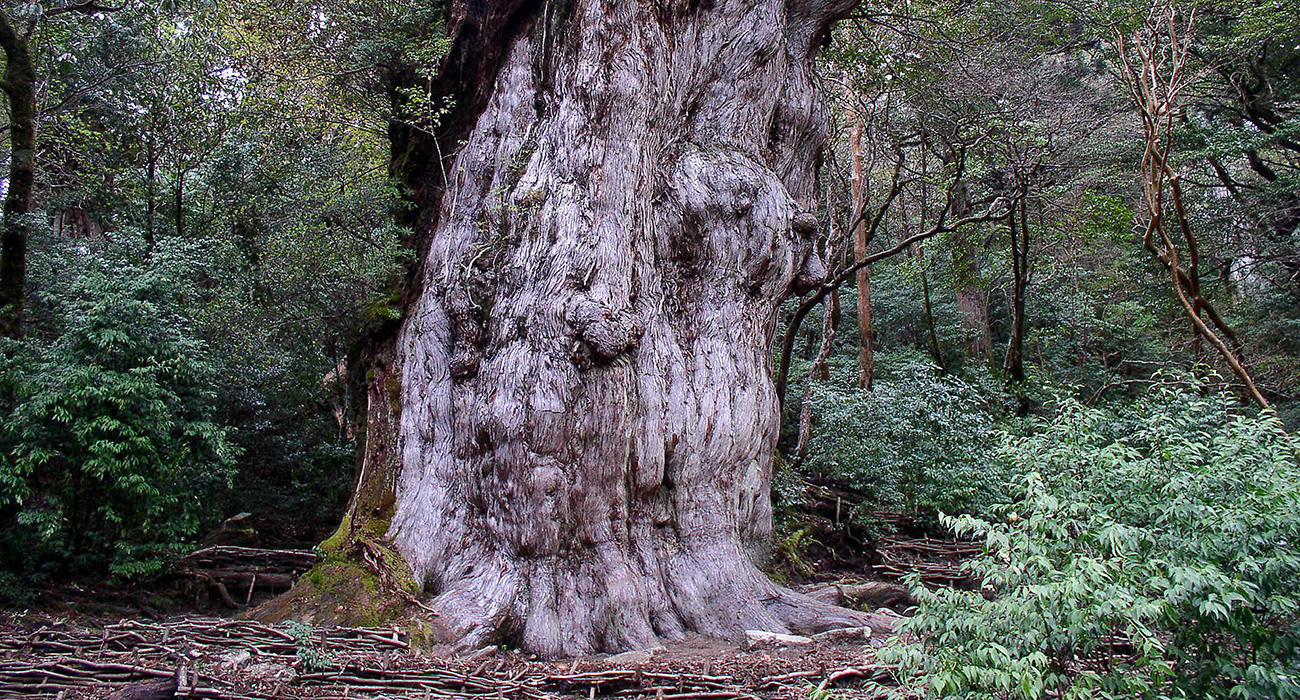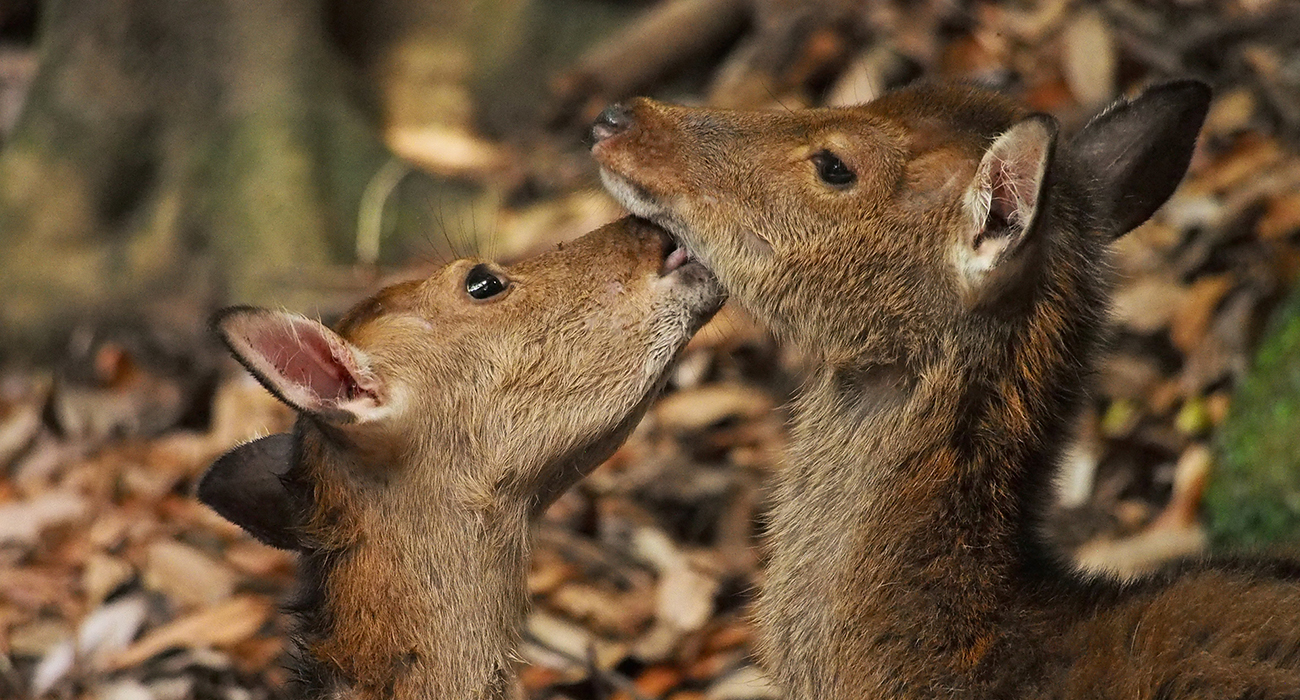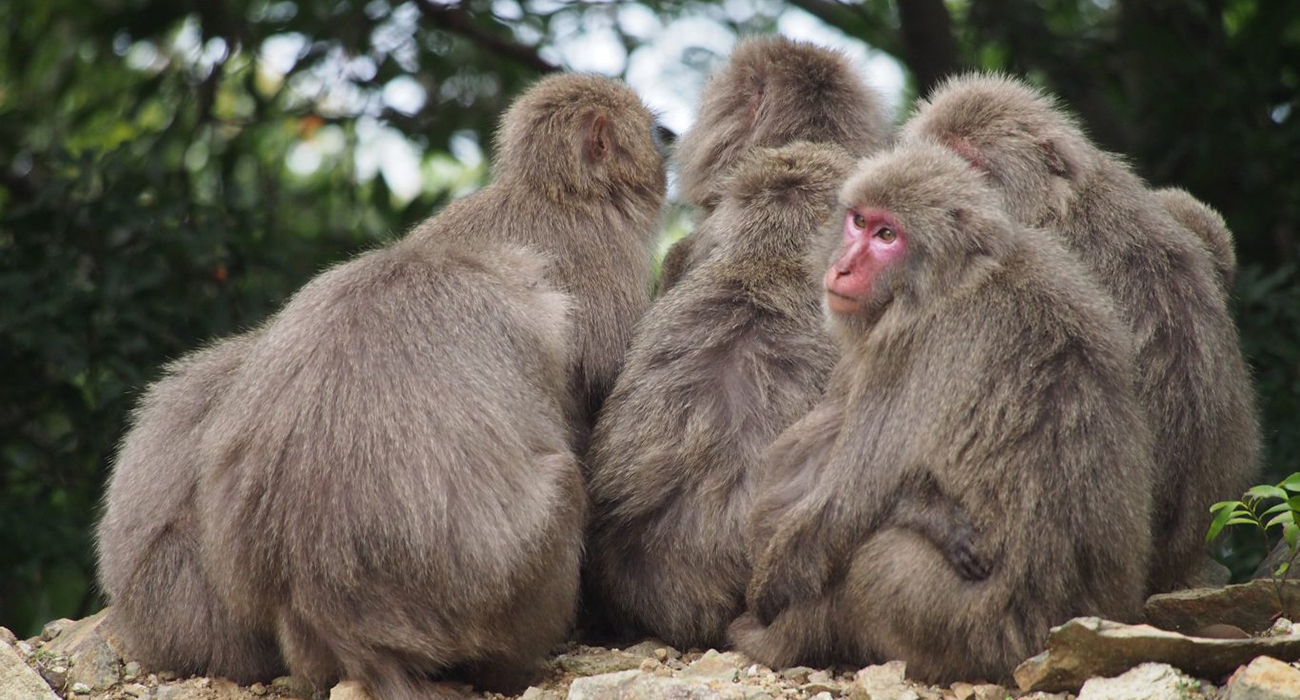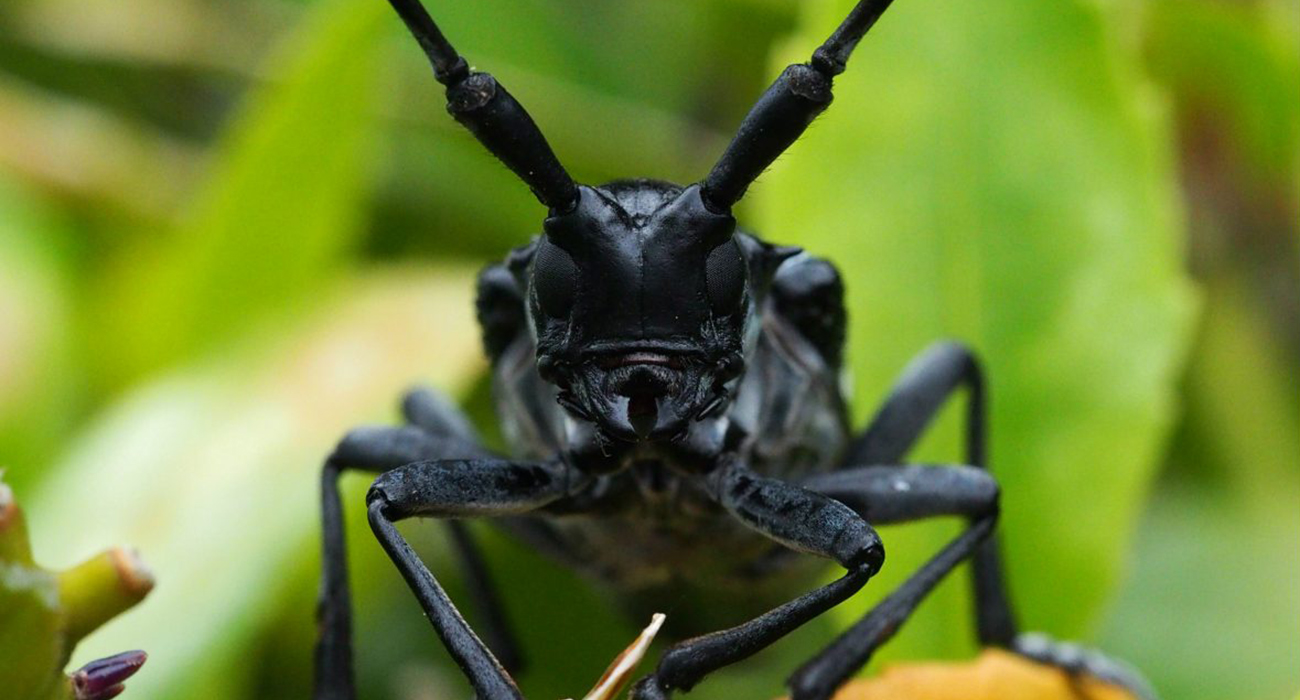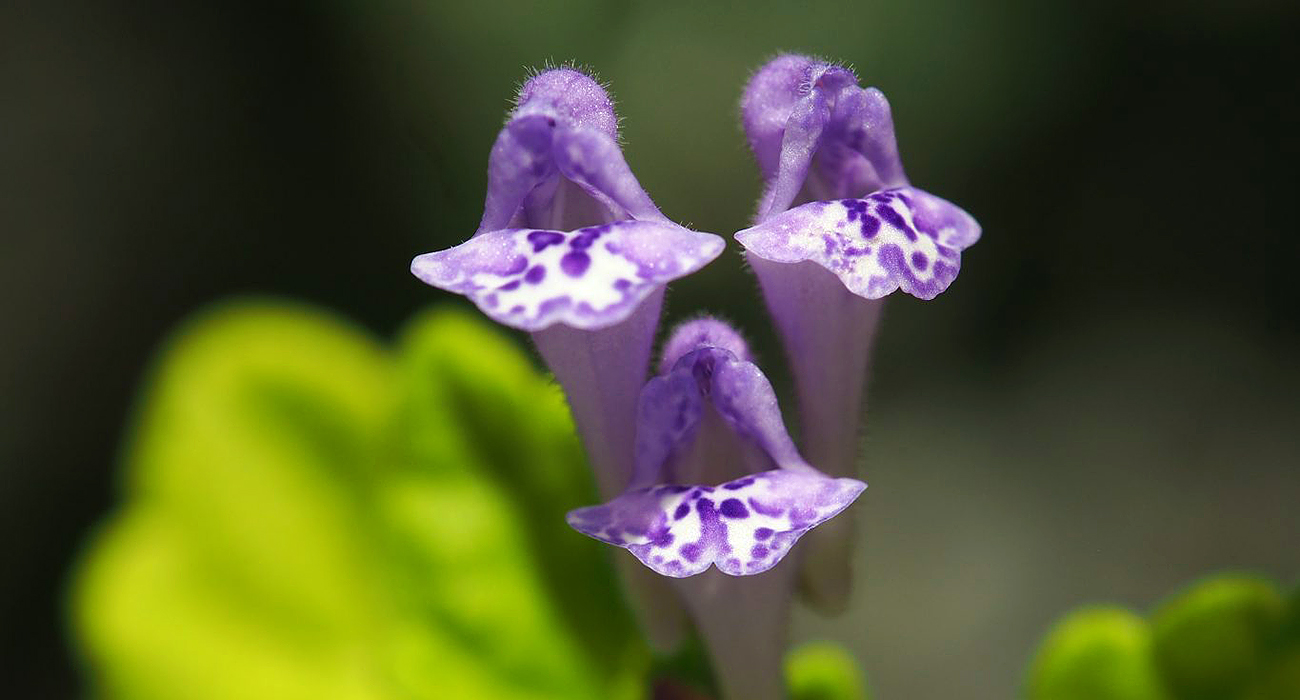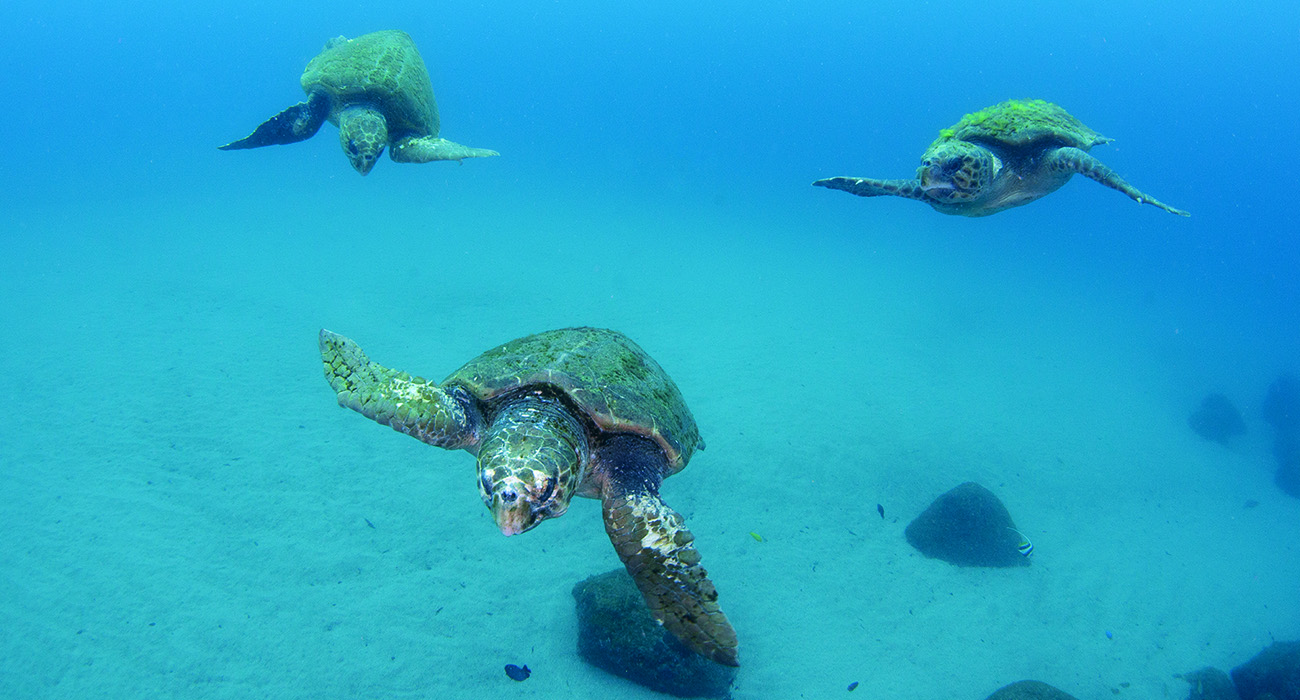THE NATURE
Yakushima`s rich natural environment
Yakushima nature consists of an incredible variety of plants and insects of which there are around 2,000 species in each category. This is an incredible figure for such a small island. Although the mammal wildlife of Yakushima is far less numerous in species, they are very evident on the island and out-number the human population. There are 16 species of mammal and 4 sub-species including the Yakushima macaque and the Yaku deer that are endemic to the island. The Japanese fieldmouse is endemic to Yakushima and the neighbouring island of Tanegashima. Around 150 bird species are found on the island. Four of these have been designated as national monuments: Izu thrush, Izu leaf-warbler, Ryukyu robin and the Japanese wood pigeon. There are 15 species of reptile including the loggerhead turtle and the green turtle. There 8 species of amphibian and an incredible number of marine species around the coastline of Yakushima.
Catergories of Yakushima nature
When hiking through the forests, you may well not be aware of the abundance of wildlife around you. The tree cover is so dense that birds are difficult to spot. Indeed there are not many birds in the higher woodland area due to a lack of food. Walk around Shiratani Unsuikyo or Yakusugi Land and you’ll be surpised how quiet it is. The majority of Yakushima birds are found around the lowland and coastal region. Yakushima is a migratory destination for some birds and so species differ according to the season. Small lizards and frogs are numerous, but hibernate in the winter (as do the snakes). From spring to late autumn spiders, butterflies and a plethora of other insects are everywhere around the coastal regions, but less so in the higher areas. The sea turtles arrive in the late spring. The largest animals are the deer and the monkeys which can be seen all year round, particularly on the hiking courses and the Seibu Rindo – the western forest road.
Macaque and deer watching precautions
1. Never offer food.
It will change the animals natural feeding behaviour, leading to more crop damage for the locals and it will also cause ill health for the animal. If animals change their diet it will also effect the balance of the ecosystem.
2. Stop your car safely before watching the animals.
The western forest road is very narrow and winding. Drive slowly and if you see a group of animals you want to watch, first safely pull in to the side of the road and pay attention to other vehicles that may want to pass.
3. Keep a safe distance of at least 10m from the animals.
It is much less stressful for the animals and safer for you if you observe them from the safety of your car. Remember you are entering their world and no matter how calm and peaceful they look they are wild animals and therefore unpredictable. Another major cause for concern is that the more familiar the monkeys and deer become with human interaction then the less afraid they become. This then leads them to feel safe about entering the human residential areas and commence eating the agricultural produce. The outcome is inevitable as the animals are either trapped or shot. Therefore, do the animals and the residents a favor by staying within your vehicle when observing the macaque and deer.
4. Don’t make eye contact with macaques.
Your curious look to a macaque signals something very different – staring is a sign of aggression. Eye contact will therefore make a macaque feel threatened and it may respond with aggression towards you. Watching from behind your camera is safer or gazing without staring.
5. If a macaque threatens you don’t panic. Don’t shout, avoid eye contact, keep a neutral face and walk away slowly and quietly. Do NOT turn your back on the macaque.
Avoiding eye contact signals to the macaque that you are not a threat and you are not taking part in this interaction. Be careful not to smile, a human smile looks like a submissive gesture to a macaque which can actually encourage it to be more aggressive. A neutral face again signals that you are not a threat . Turning your back is an invitation for it to attack you. Macaques attack each other by jumping on each other’s backs. Once the macaques have calmed down and returned to their own business and you are at a safe distance, then you can turn around and walk away.




